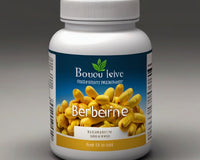What are refined carbohydrates?
Refined carbohydrates are also called simple carbohydrates or processed carbohydrates.
There are two main types:
- Sugar: Refined and processed sugars, such as sucrose (table sugar), high-fructose corn syrup, and agave syrup.
- Refined Grains: These grains have the fibrous and nutrient-dense parts removed. The largest source is white flour made from refined wheat.
Refined carbohydrates have been stripped of almost all fiber, vitamins and minerals. Therefore, they can be considered "empty" calories.
They are also quickly digested and have a high glycemic index. This means they can cause blood sugar and insulin levels to rise quickly after a meal.
Eating foods with a high glycemic index is associated with an increased risk of overeating and many diseases.
Unfortunately, sugar and refined grains make up a large portion of total carbohydrate intake in many countries.
The main dietary sources of refined carbohydrates are white flour, white bread, white rice, pastries, sodas, snack foods, pasta, candy, breakfast cereals and added sugars.
They are also added to a variety of processed foods.
They consist of three main parts:
- Bran: The tough outer layer that contains fiber, minerals and antioxidants.
- Germ: A nutrient-rich core containing carbohydrates, fats, proteins, vitamins, minerals, antioxidants and plant compounds.
- Endosperm: The middle layer, containing mainly carbohydrates and a small amount of protein.
The bran and germ are the most nutritious parts of whole grains.
They contain large amounts of many nutrients, such as fiber, B vitamins, iron, magnesium, phosphorus, manganese and selenium.
During the refining process, the bran and germ are removed along with all the nutrients they contain.
This leaves virtually no fiber, vitamins or minerals in the refined grain. The only things left are quickly digested starch and a small amount of protein.
That being said, some manufacturers add synthetic vitamins to their products to make up for the loss of certain nutrients.
It has long been unclear whether synthetic vitamins are as good as natural vitamins. However, most people would agree that getting your nutrients from whole foods is always the best option.
Diets high in refined carbohydrates also tend to be low in fiber. Low-fiber diets are associated with an increased risk of conditions such as heart disease, obesity, type 2 diabetes, colon cancer, and various digestive disorders.














